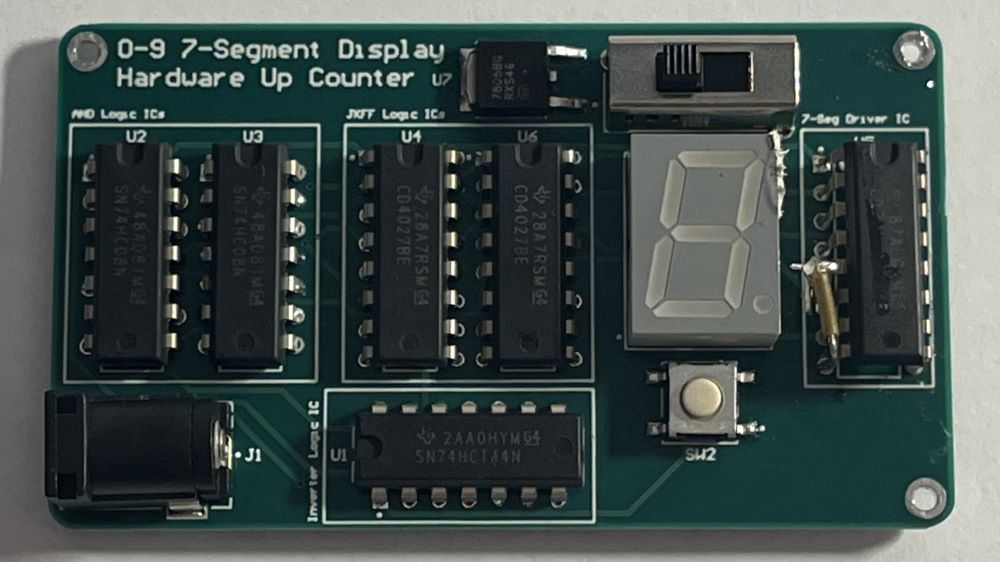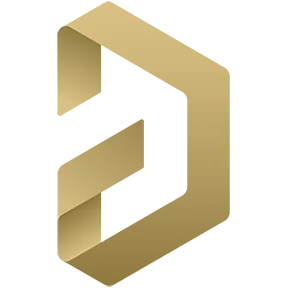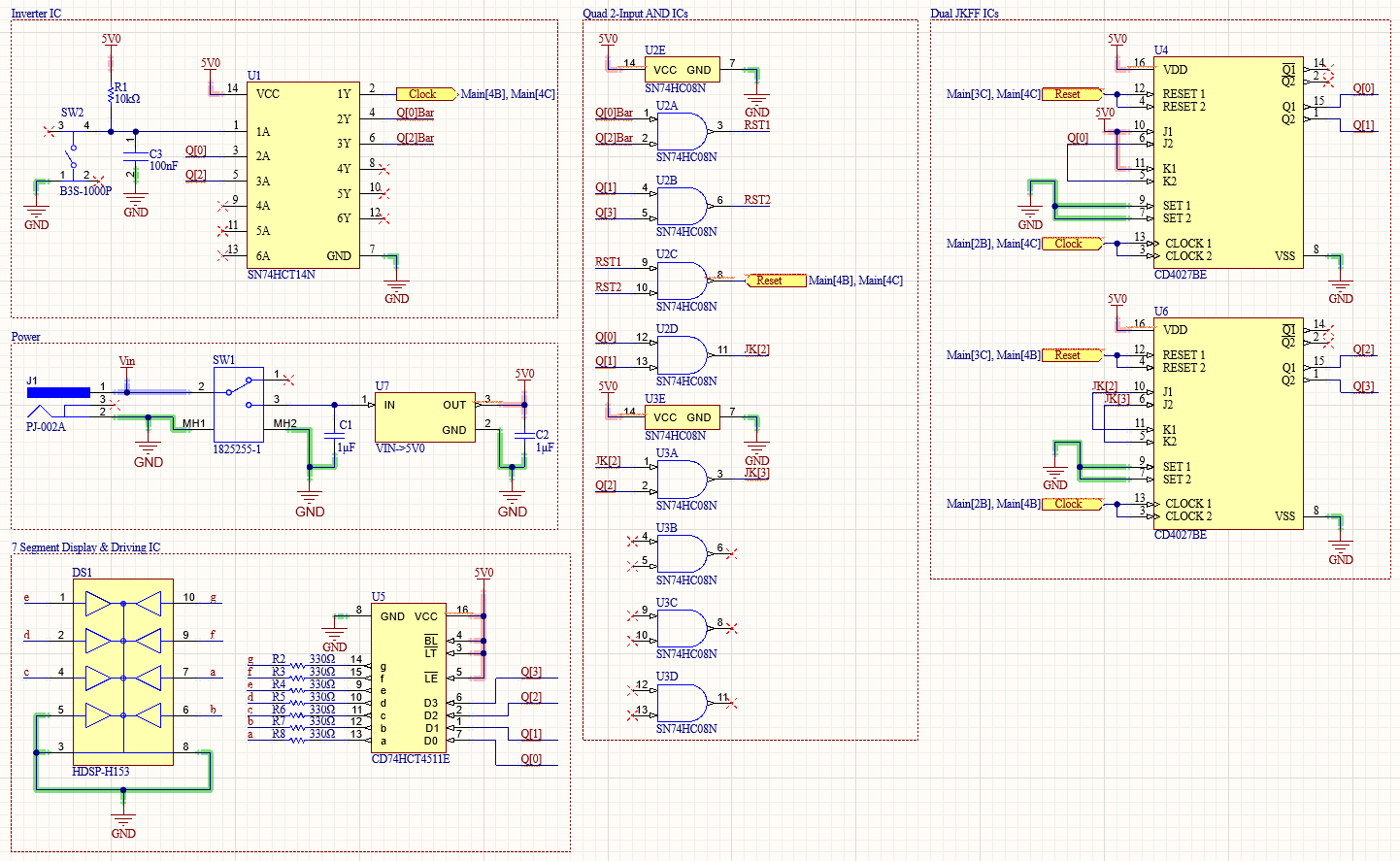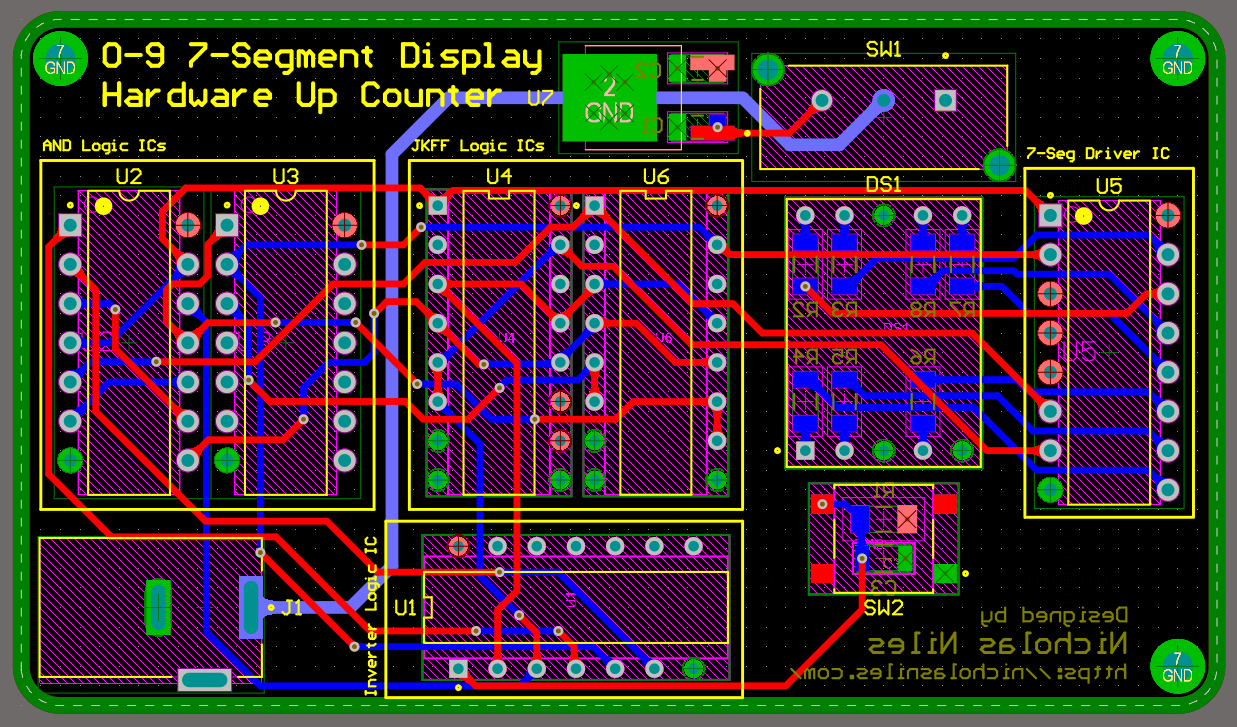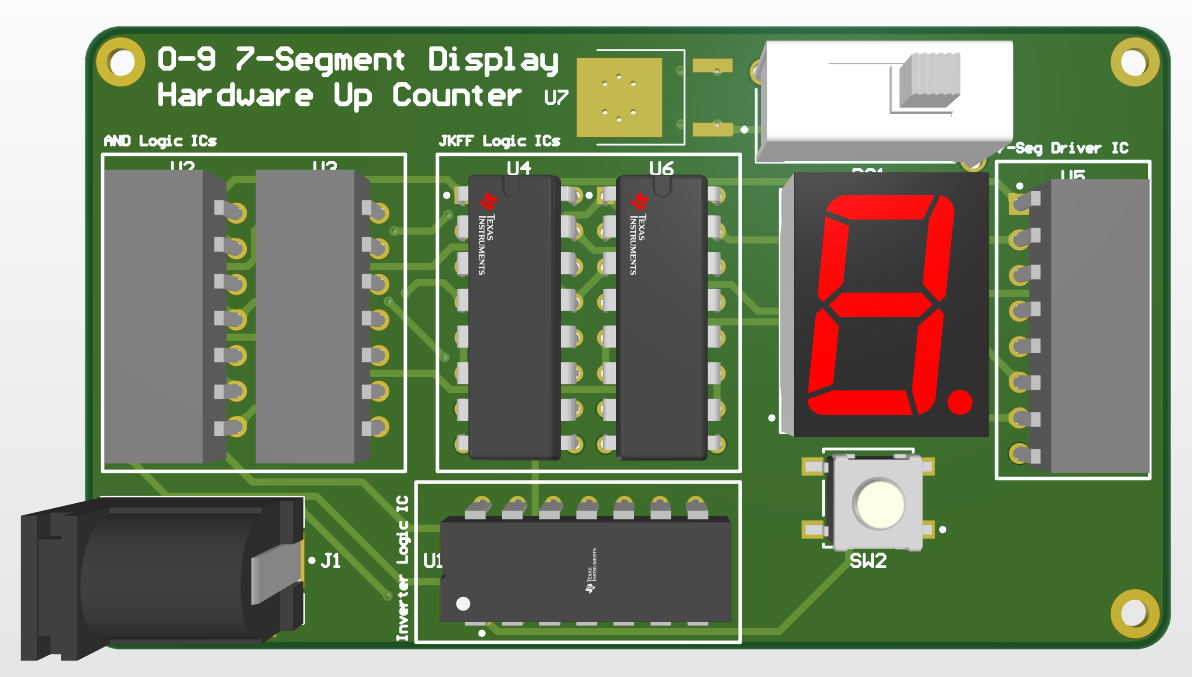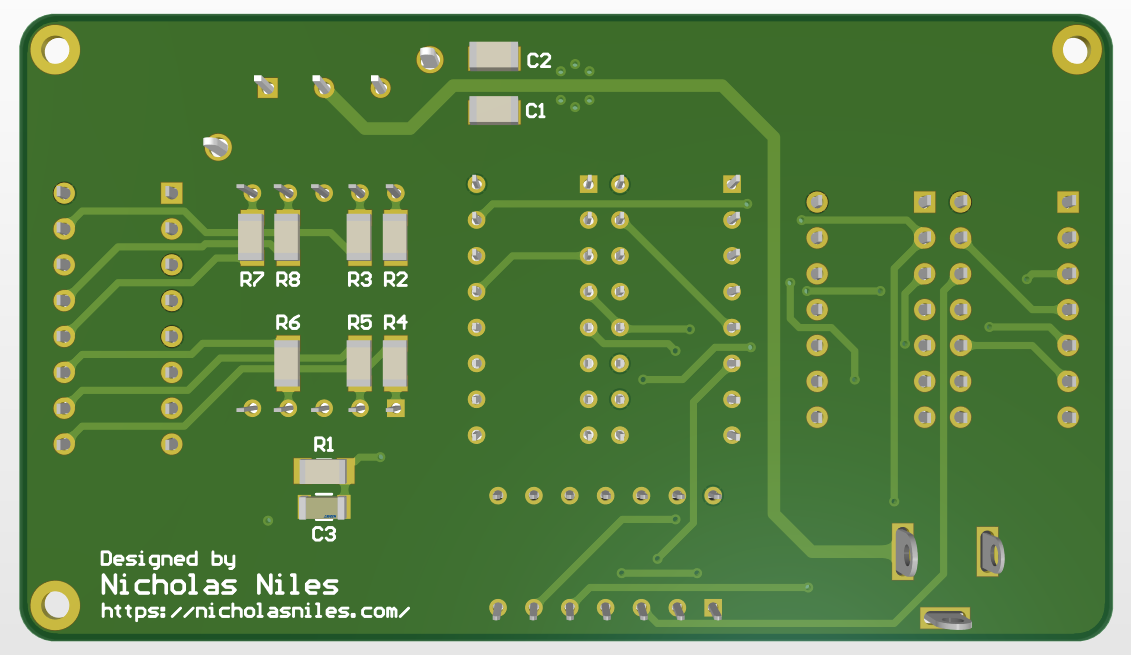0-9 Digital Counter
Circuit Board
The 0-9 Digital Counter is a PCB I designed in Altium Designer that increments a 4-bit binary coded decimal (BCD) value stored in JK flipflops by 1 every time the user presses a push button, displaying that value on a 7-segment display. It uses an asynchronous reset once the counter reaches 10 to set itself back to 0, and a serial-in parallel-out method of incrementing, storing, and outputting each bit stored in the counter.
This project is sponsored by PCBWay, a wonderful and easy to use PCB manufacturer.
